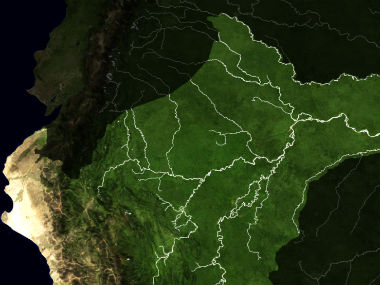Scientists are developing a new system to help predict malaria outbreaks at the household level months in advance, using data from NASA’s fleet of Earth-observing satellites, that may help prevent the deadly disease from spreading. Containing malaria outbreaks is challenging because it is difficult to figure out where people are contracting the disease. As a result, resources such as insecticide-treated bed nets and indoor sprays are often deployed to areas where few people are getting infected, allowing the outbreak to grow. To tackle this problem, researchers have turned to data from satellites which are able to track the types of human and environmental events that typically precede an outbreak.
“Malaria is a vector-borne disease, which means you have to have a vector, or mosquito, in this case, transmit the disease,” said William Pan, an assistant professor at Duke University in the US. “The key to our malaria forecasting tool lies in pinpointing areas where prime breeding grounds for these mosquitoes overlap simultaneously with human populations,” said Pan. Predicting where these mosquitoes will flourish relies on identifying areas with warm air temperatures and calm waters, such as ponds and puddles, which they need for laying eggs. Researchers are turning to the Land Data Assimilation System (LDAS), a land-surface modelling effort. NASA satellites, such as Landsat, Global Precipitation Measurement, and Terra and Aqua, serve as inputs for LDAS, which in turn provides ongoing information on precipitation, temperature, soil moisture and vegetation around the world. While not identifying puddles and ponds outright, LDAS shows where they are very likely to form. For example, flooding may overflow riverbanks or heavy rains can saturate the soil, allowing water to pool. [caption id=“attachment_4043295” align=“alignleft” width=“380”]  Malaria map in Peru. Image: NASA.[/caption] LDAS also tracks another major indicator for future malaria outbreaks: deforestation, in particular when road development is involved. When roads are built, bulldozers dig ditches to dispose of trees and other vegetative waste; when filled with rainwater those ditches become mosquito breeding sites. When infected people traverse these roads and transmit the disease to mosquitoes, an outbreak can occur. The regional model will provide a big-picture look at how humans, mosquitoes, and the disease are located and where they are headed based on how those variables interact. At the same time, the agent-based model - named because it models the behaviour of every agent, or every human, mosquito, and malaria parasite within an area - will zoom in on a tighter geographic space by utilising high-resolution hydrology data and by homing in on neighbourhoods and the movement of people. In combination with LDAS data, the model will run a simulation to assess the probability of when, where and how many people are expected to get bitten and infected with the disease. The models will be used to project forward 12 weeks and pinpoint, down to the household level, where the disease is predicted to take hold. The models will also simulate what would result from any one of several actions, from handing out bed nets and sprays that can reduce human-mosquito contact to administering preventive anti-malaria treatment that can stop transmission.


)
)
)
)
)
)
)
)
)



